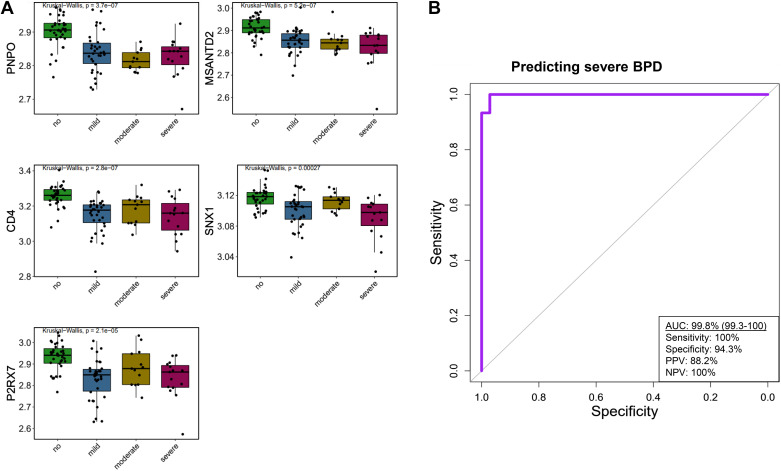Figure 4.
Median expression of genes by bronchopulmonary dysplasia (BPD) severity and performance of extreme gradient boost tree machine learning model in predicting severe BPD. A: five-gene signature stratified by no BPD (n = 35) and mild (n = 34), moderate (n = 13), or severe BPD (n = 15). Each box indicates the median with interquartile range, whereas the dots represent expression of the gene per individual. Kruskal–Wallis statistical test was conducted to examine differences across multiple groups. No BPD vs. each BPD group was statistically significant for each gene on post hoc analysis. Expression of each gene was comparable among the BPD groups (P > 0.05). B: area under the receiver operating characteristics curve (AUC) for early prediction (e.g., day 5) of severe BPD in the testing sample (n = 28 subjects) utilizing the five transcriptomic signature built with extreme gradient boost tree. As depicted, the five genes included pyridoxine 5′-phosphate oxidase (PNPO), Myb/SANT DNA binding domain containing 2 (MSANTD2), CD4, CD4 molecule (CD4), sorting nexin 1 (SNX1), and purinergic receptor P2X, ligand-gated ion channel 7 (P2RX7).

